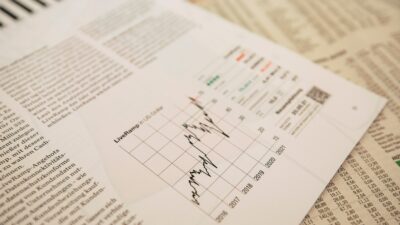
Explainer: how wage growth contributes to the economy
The Fair Work Commission is considering whether to increase Australia’s minimum wage. The Australian Council of Trade Unions is arguing for a A$45-a-week rise. Industry, arguing that currently business has limited ability to afford wages increases, wants the increase capped at 1.5% (closer to $10 a week).
While I suspect most people immediately focus on wages as a cost of production for business, it’s worth clarifying precisely what economic roles wages play. There is more than one.
Indeed, wages are certainly a cost. More precisely, their significance for business as a cost is as one component of something economists call “real unit labour cost”.
This is the cost of employing a person in terms of the value of the goods and services a business would produce. Crudely put, this means the proportion of the value of a day’s production that would be needed to pay for a day’s labour. This depends on two things.
Two key influences: productivity and real wages
The first is the real wage – the purchasing power of the worker’s pay packet, which brings into play prices of goods and services. The second is the productivity of the worker – how much the worker produces over a given time.
The real cost of employing a person over time depends on how these two things change. If productivity is growing, then the real wage can grow without an increase in the real cost of labour for business.
But a couple of other economic considerations are relevant when assessing the economic impact of changes in the worker’s wage. The first is that productivity also depends on investment. Changes in technology that allow for greater productivity are often embodied in the new plant and equipment that firms invest in.
Yet what governs investment? This is an age-old question in economics, and perhaps one of the least agreed areas within the profession. But any stab at this question would conceivably point to the expected rate of return on the investment relative to the so-called cost of capital. An economist would typically measure the cost of capital by reference to interest rates, among other things.
However, the rate of return is critically dependent on how much demand there is for the goods and services produced by the new plant and equipment the business invests in.
There is also a competitive imperative which links demand growth and investment. Maintaining market share requires a business to be able to respond to growing demand. Optimally, this requires increasing capacity and thus undertaking investment.
Wages growth and investment
But demand growth varies with spending power and the income that flows to the population, a significant portion of which comes from wages. In other words, wages have a flipside. They’re not just a cost of production; they’re also a source of spending and thus of revenue and profit for business.
This is an important point in economics, specifically about how what we see at the micro level does not automatically replicate itself for the economy as a whole. Looked at from the perspective of a single business, wages appear as a cost. But to only look at things this way is inadequate if you are interested in the impact of changes in wages on the overall economy. For that you also have to consider wages as income and a source of demand.
Expectations about future demand growth are presumably as critical to the investment decision for firms as are expectations about factors such as taxes on business income.
A reduction in business taxation may well increase prospective after-tax rates of return on investment. But, as already mentioned, this assumes people with income to spend are ready to buy the output produced with newly installed plant and equipment.
Looked at from this angle, one could argue that growth in demand and in turn wages growth will be required to warrant producers undertaking investment and in turn the kind of changes to production that underpin productivity growth.
One can go a little further. Assuming a government’s intention is to wind back its contribution to demand in the economy (via government spending) through what is euphemistically termed “fiscal consolidation”, and assuming our trade is not significantly changing, a certain real wage growth is required to generate sufficient growth in demand to warrant sustained investment and productivity growth.
It’s the flipside to this scenario that is worrying. To the extent that increasing profitability through increased productivity is not shared in the form of increased real wages, the economy faces the danger of its productive capacity growing faster than demand. This kind of danger was highlighted long ago by the noted Italian economist Luigi Pasinetti.
In this scenario the profit of each unit of output may increase initially as productivity grows, but demand does not keep pace, in which case the increase in profitability is likely to be short-lived. More worrying in this case is that employment growth suffers and consequently the unemployment rate is likely to rise.
Some economists would counter that real wages would fall in order to absorb any increased unemployment, though this claim has always been contentious. It supposes that unfettered markets will always provide demand for whatever amounts of goods and services are produced – in itself a controversial position in economics.
Of course, none of this deals with the moral or ethical imperative of a minimum wage which ensures a liveable real wage. Rather, the point here is that, quite aside from the moral or ethical case, there are economic arguments to be had for ensuring an appropriate rate of growth of real wages.
This article was originally published on The Conversation. Read the original article.
Image: Julian Hochgesang
Graham White´s research interests have centered on the issues associated with synthesising Sraffian-inspired pricing models with Keynesian models of output and growth, as a non-orthodox theoretical foundation for examining economic phenomena.
Share
We believe in open and honest access to knowledge.
We use a Creative Commons Attribution NoDerivatives licence for our articles and podcasts, so you can republish them for free, online or in print.







